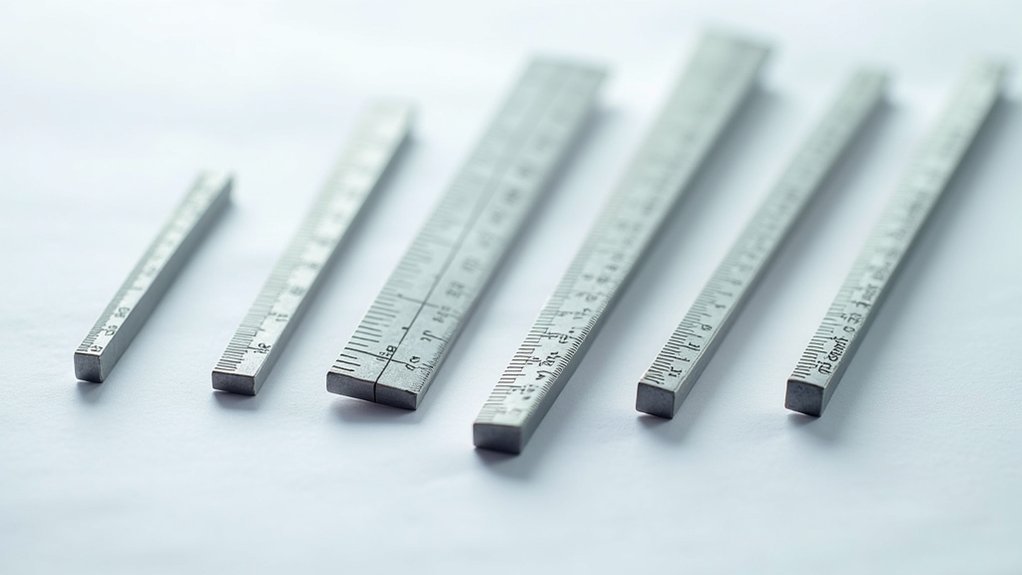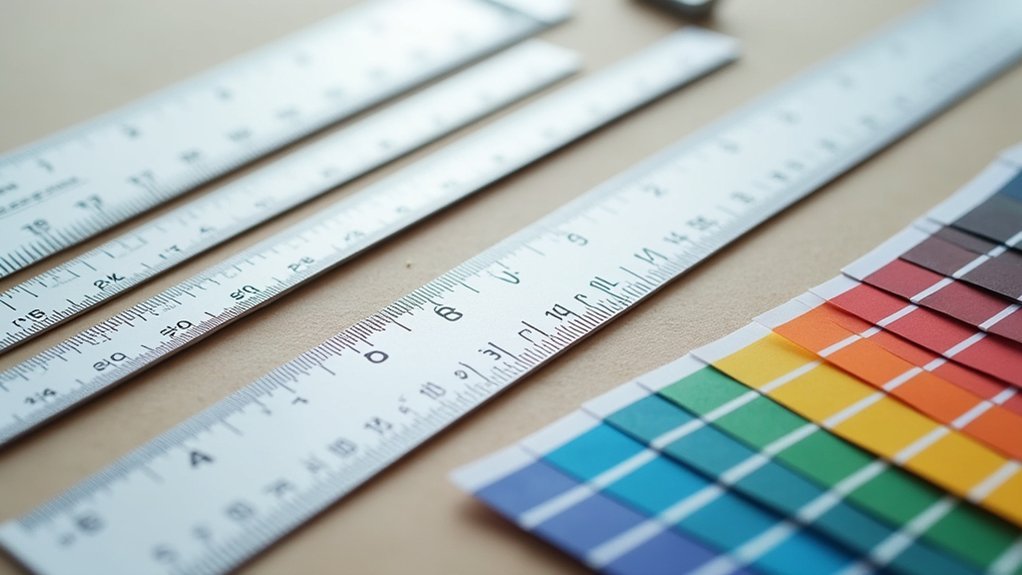If you're looking to transform your photography with stunning visual effects, you'll find that microscope filters are your secret weapon in 2025. These specialized tools can turn ordinary shots into mesmerizing works of art, creating everything from prismatic bursts to swirling vortexes. Whether you're a professional photographer or an enthusiastic hobbyist, understanding the top three filters and how they can enhance your creative vision will make a significant difference in your final images.
JINGLIANG 80mm Handheld Kaleidoscope Filter for Cameras
The JINGLIANG 80mm Handheld Kaleidoscope Filter stands out as an ideal choice for photographers who want to add creative prismatic effects to their work without breaking the bank. This lightweight, 80mm filter features a practical 2-finger handle design that you'll find easy to manipulate during shoots.
At just 3.15 inches wide and weighing 8 ounces, it's compatible with most camera lenses and comes packaged in a gift box. With a strong 4.4-star rating from 123 users, photographers praise its unique effects and value, particularly for music videos and client sessions. While some users note handle durability concerns, the filter's optical glass prism delivers professional-quality results at a competitive price point.
Best For: Professional and amateur photographers seeking to add creative prismatic effects to their photography and video work while maintaining a budget-friendly approach.
Pros:
- Lightweight and portable design with convenient 2-finger handle for easy manipulation
- Compatible with most camera lenses and delivers professional-quality prismatic effects
- Excellent value for money compared to more expensive alternatives in the market
Cons:
- Some users report concerns about the handle's long-term durability
- Limited to 80mm size which may not suit all lens configurations
- No detailed warranty information readily available in product documentation
Camera Linear Filter 67MM Prism Film for DSLR Photography
Professional photographers seeking unique creative effects will find the Camera Linear Filter 67MM Prism Film an essential tool for their DSLR photography kit. The filter's rotatable design creates stunning linear repeating effects that vary with angle and focal length adjustments.
Built with high-quality K9 optical glass and an aluminum alloy frame, you'll get exceptional clarity and durability. It's compatible with various 67MM lenses, and you can use adapter rings for different calibers. The filter excels in music videos, advertising shoots, and portrait work.
You'll receive a storage bag and cleaning cloth with your purchase, making maintenance and transport hassle-free.
Best For: Professional photographers and videographers looking to create unique linear repeating effects in their work without post-processing.
Pros:
- High-quality K9 optical glass construction ensures excellent clarity and durability
- Versatile compatibility with 67MM lenses and adaptable to other sizes with rings
- Includes protective storage bag and cleaning cloth for proper maintenance
Cons:
- Relatively high price point for a specialty filter
- Effects may require practice to master and control effectively
- Limited to specific creative applications and may not be useful for everyday photography
Camera Vortex Effect Filter 77MM for DSLR Photography
Creative photographers seeking unique in-camera effects will find the 77MM Vortex Effect Filter an invaluable tool for capturing mesmerizing, swirled images without post-processing. This high-quality K9 optical glass filter maintains a clear center while creating dramatic distortions around your subject.
You'll appreciate its durable aluminum alloy frame and splash-resistant construction. At 3.03 x 3.03 x 0.04 inches and weighing 6.3 ounces, it's compatible with 77MM lenses or can be adapted using lens rings. The filter comes with a protective pouch and lens cloth, ranking #102 in Camera Lens Effects Filters with a 4.2-star rating. It's particularly effective for portrait photography and cinematic video work.
Best For: Creative photographers and videographers who want to achieve unique, swirling effects in their images without relying on post-processing software.
Pros:
- High-quality K9 optical glass construction with durable aluminum frame
- Creates distinctive vortex effects while maintaining clear center focus
- Includes protective pouch and lens cloth for proper maintenance
Cons:
- Limited to 77MM lens size without additional adapter rings
- Specialized effect may not suit all photography situations
- Premium price point compared to standard camera filters
Factors to Consider When Choosing Microscope Filters for Special Effects Photography
When you're selecting microscope filters for special effects photography, you'll need to match the filter size with your lens specifications and guarantee proper compatibility with your camera system. The filter's light transmission quality and optical glass grade directly impact image clarity and color accuracy, making these critical factors in your decision-making process. Your filter's durability and lens mount design are equally important, as they determine how well the filter will withstand regular use and how securely it attaches to your equipment.
Filter Size and Compatibility
Selecting the right filter size stands as an essential first step in microscope photography success. You'll need to match your filter's diameter precisely to your camera lens for best results. Common sizes include 67mm and 80mm options, but you should always check your lens specifications before making a purchase.
If you're working with multiple lenses of different sizes, you might want to think about adapter rings. These handy tools let you use a single filter across various lens calibers, maximizing your investment and creative possibilities. When choosing your filter size, remember that larger filters typically offer wider coverage and more dramatic effects. Don't forget to factor in the filter's weight – lighter options will give you better control during shooting sessions and reduce strain during extended photography work.
Light Transmission Quality
Light transmission quality serves as the cornerstone of successful microscope special effects photography. When you're selecting filters for your microscope setup, you'll want to prioritize those made from premium optical glass, particularly K9 glass, which delivers superior clarity and color accuracy. Look for filters that offer 90% or higher light transmission rates to guarantee your special effects shots maintain their vibrancy and sharpness.
Your filter's frame construction matters too. Choose ones with durable aluminum alloy frames that resist scratches and splashes, as this will help maintain consistent light transmission over time. By selecting high-quality filters, you'll be able to create stunning effects in-camera without relying heavily on post-processing. The better your filter's light transmission, the more accurately you'll capture the intricate details and dynamic scenes in your microscope photography.
Construction Material Durability
Beyond light transmission, the construction materials of your microscope filters directly impact their performance and longevity. You'll want to prioritize filters made with K9 optical glass, as it offers superior clarity and resistance to daily wear. This high-grade material guarantees your filters won't degrade quickly with regular use.
Look for filters featuring aluminum alloy frames, which provide essential protection against accidental scratches and liquid splashes. While thicker glass can offer enhanced durability, you'll need to balance this against the added weight to your setup. When selecting filters for special effects photography, verify they're built to withstand repeated use without compromising their structural integrity. The best filters maintain their protective qualities while delivering consistent performance, making them a worthwhile investment for your microscope photography needs.
Lens Mount Design
The two most important aspects of lens mount design are compatibility and secure attachment. You'll need to check your lens diameter first, typically marked as 67MM or 77MM, to verify your microscope filter will fit properly. If you're working with multiple lenses of different sizes, consider getting adapter rings to maximize your filter's versatility.
Look for mounts that allow quick attachment and removal, as you'll likely need to swap filters frequently during your special effects photography sessions. The mount's construction quality is equally important – it should be sturdy enough to keep the filter stable while shooting, preventing any unwanted movement that could blur your images. Poor mounting can compromise even the highest quality filter, so don't overlook this vital feature when making your selection.
Optical Glass Grade
Quality optical glass serves as the foundation for exceptional microscope filter performance in special effects photography. You'll want to prioritize filters made with solid K9 optical glass, which offers superior durability and transparency for your creative shots.
When you're selecting microscope filters, pay close attention to the glass grade, as it directly impacts your image clarity and light transmission. Lower-quality glass can introduce unwanted artifacts and color fringing that'll detract from your final results. Look for filters with adequate thickness and uniform construction, as these features provide better scratch resistance and impact protection.
You'll find that investing in high-grade optical filters pays off by delivering consistent results across various lighting conditions. This quality choice will minimize the time you spend correcting issues in post-processing, helping you achieve professional-level special effects.
Effect Pattern Options
Selecting your ideal effect pattern begins with understanding three primary design categories: kaleidoscopic, linear, and vortex filters. For microscope photography, you'll find that kaleidoscopic patterns create symmetrical visuals that can transform cellular structures into stunning artistic compositions.
When you're focusing on specific specimen details, vortex filters are your best choice. They'll keep the center clear while artistically distorting the surrounding areas, making your subject pop. Linear patterns work well if you're planning to create video content or want repeating imagery across your frame.
You'll want to contemplate filters with rotatable designs, as they'll give you more control over the final image. Remember that the pattern's effectiveness depends heavily on your filter's optical glass quality, so don't compromise on material construction.
Storage and Protection
Proper storage practices can make or break your microscope filter investment. You'll want to use protective storage bags that come with your filters to shield them from dust, moisture, and accidental impacts that could compromise their optical quality.
Keep your filters in a dry environment to prevent mold growth and deterioration, especially if you've invested in high-quality optical glass filters. It's smart to organize them in designated cases, making them easily accessible when you need them for your shoots while reducing the risk of misplacement or loss.
Don't forget to clean your filters regularly with a dust-free lens cleaning cloth. This simple maintenance step will help maintain clarity and extend their lifespan, ensuring you'll get the most out of your special effects photography equipment.
Budget Versus Features
When shopping for microscope filters, you'll need to strike a delicate balance between your budget and desired features. Premium filters typically offer superior optical quality and durability, but that doesn't mean you can't find effective options at lower price points.
Consider filters like the JINGLIANG 80mm Handheld Kaleidoscope Filter, which proves that mid-range options can deliver impressive results with high user satisfaction. Look for cost-effective solutions that create unique effects without requiring extensive post-processing work, such as the Camera Linear Filter for repeating patterns.
To maximize your investment, prioritize versatile filters that work with multiple focal lengths and lens sizes. Before making your final decision, check customer reviews and ratings to verify the features justify the price point. This research will help you find the sweet spot between affordability and functionality.
Frequently Asked Questions
Can Microscope Filters Be Used With Smartphone Cameras?
You can use microscope filters with your smartphone by attaching special adapters that connect your phone's camera to the microscope. It's a great way to capture detailed micro-photography right from your device.
How Do You Clean and Maintain Special Effects Filters Properly?
You'll need to gently clean your filters with a microfiber cloth and lens cleaning solution. Don't use harsh chemicals. Store them in protective cases when not in use, and avoid touching the surface directly.
Are These Filters Compatible With Mirrorless Cameras?
You'll find most special effects filters are compatible with mirrorless cameras. You'll just need the right adapter ring for your lens diameter. Check your camera's lens thread size before purchasing any filters.
What Lighting Conditions Work Best With Microscope Filters?
You'll get the best results with microscope filters in bright, diffused natural light. If you're shooting indoors, use constant LED lighting or ring lights to evenly illuminate your subject while avoiding harsh shadows.
Do Microscope Filters Affect the Camera's Autofocus System?
Yes, microscope filters can impact your camera's autofocus performance. You'll notice that darker filters make focusing more challenging, while lighter ones won't greatly affect your AF system's ability to lock focus.





Leave a Reply